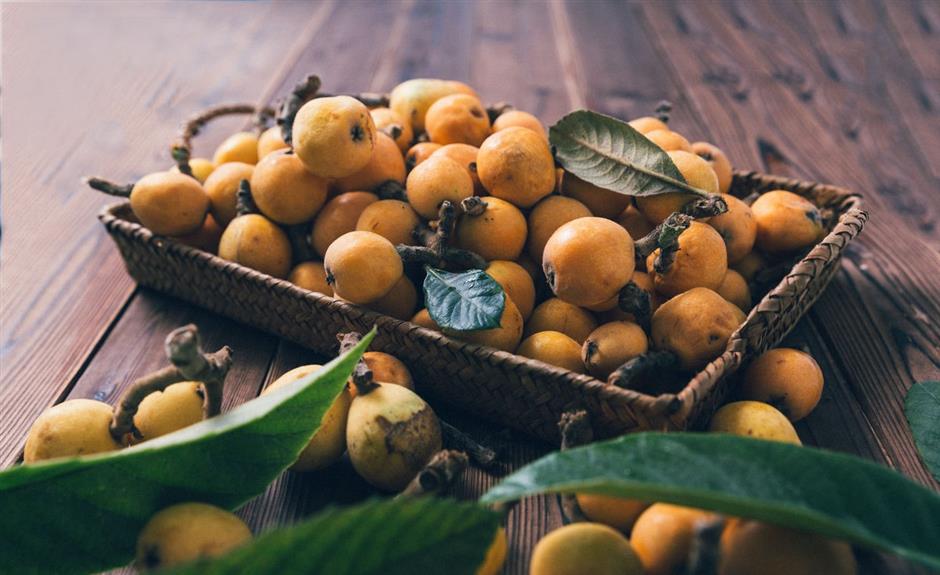Hangzhou's most sought-after early summer foods

Lin'an dried bamboo shoots
Lin’an dried bamboo shoots
Hangzhou was once called Lin’an in the 13th century, when the Southern Song Dynasty (1127-1279) rulers moved the capital here. The name is now used to refer to a mountainous district of the city, lying 30 kilometers in the west.
For foodies, Lin’an is famous for its mountain produce including hickory nuts and dried bamboo shoots. The latter are widely used in well-known dishes such as old duck soup stewed with dried bamboo shoots, or dried bamboo shoots steamed with pork belly.
They can be found in any dishes for accentuating the savory taste and balancing the grease in the meat. And they can be cooked in a multiple of ways, in soups, steamed and in sautéed dishes.
Most of the dried bamboo shoots are produced in local family workshops. The production starts from the time of the Qingming Festival and ends on the day of Guyu (Grain Rain), which falls between the end of April and early May.
The first step is to remove the shell of fresh bamboo shoots, before boiling them in water thoroughly. The cooked ones are then dried in an oven twice, each for six to seven hours.
The dried bamboo shoots must be steeped in water for several minutes before use. Other than being a good companion to meat, they can also be stir-fired with lots of vegetables including zucchinis, broad beans, eggplants and wax gourds.
The locals will stew them with cooking oil, cooking wine, sugar, salt and water and take them as a tapas or an appetizer in a formal dinner.

Waxberries or yangmei in Chinese
Yuyao waxberry
The waxberry is native to East Asian countries and widely grown in China, especially in the southern areas, such as Xianju County, Cixi and Yuyao City within Zhejiang Province.
The waxberry pollen found at the Hemudu Neolithic Site in Yuyao is a proof that for at least 7,000 years people had been cultivating the fruit in the area. Almost every household in Yuyao has its own waxberry orchard. The Ministry of Agriculture also dubbed Yuyao the “Town of waxberry” in 1995.
May is the season when waxberries start to ripen. The colors can be white, crimson and purple. Those pingpong-sized in dark purple are considered to be the best, which keep a balanced taste between sweet and tart.
But the shelf life for waxberries is extremely short. They usually appear in the market in large quantities around the time of the Dragon Boat Festival which falls on the fifth day of the fifth month of the Chinese lunar calendar. The freshly picked ones may only be kept for three days at best. Also because of its slightly acidic flavor, it is wise not to take in too much at one time.
Hangzhou natives love to turn their remaining yumberries into wine. The wine is made by steeping fresh waxmberries in Chinese baijiu (such as sorghum wine) with crystal sugar for 15 to 25 days.
Locals believe this is a food therapy for heatstroke and heat dysentery. So taking a sip of waxberry wine before dinner will be one of the most enjoyable moments for many in summer.

Loquats or pipa in Chinese
Tangqi loquat
Tangqi is an ancient town in the north of the city, which was established 1,000 years ago.
The town took shape in the late Yuan Dynasty (1271-1368), when Zhang Shicheng, a rebellion leader from the area, widened the Grand Canal that runs through the town.
Historic buildings from the Ming (1368-1644) and Qing dynasties (1644-1911) can be found everywhere in town. And the Guangji Bridge, built in the 15th century, is the only seven-arch bridge on the Grand Canal. It is listed as part of the UNESCO World Heritage Site.
Tangqi has been a nationally acclaimed production area of loquat for many years. The most expensive ones are called Baisha (white sand) which are sweeter in taste compared to others and have thinner skin, tighter and tenderer flesh.
The town has a total plantation area of 1 square kilometer with an average yearly yield of around 5,000 tons. But this year’s cold winter suggests the total harvest could be less.
Since 1999, the town has been holding an annual loquat festival during the May picking season. This year the festival started on May 15, and 27 local orchards and farms are offering loquat-picking activities for tourists.
The plant’s leaves are also used as an important ingredient in making loquat syrup.
In traditional Chinese medicine, it is used for easing sore throats and coughs.
















